How to Kill Moles, Voles & Groundhogs
Holes in your lawn can multiply if your yard has moles, voles or groundhogs. There are many methods for ridding your yard of these creatures, some humane and some less so. The surest way to prevent moles, voles or groundhogs from coming back is to kill them.
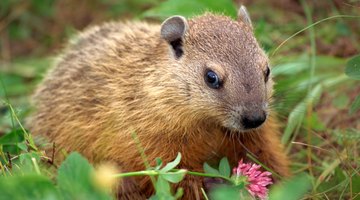
These burrowing rodents behave differently, making some kill methods more effective than others. Moles are solitary creatures; if you have a mole problem, it is probably just one or two moles making tracks in your lawn. Moles eat grubs, beetles and other subterranean insects and create an elaborate network of tunnels searching for food. They rarely come to the surface, but can leave your lawn spongy. Trapping them in their favorite tunnels is an effective way to eliminate a mole. Voles eat the roots of trees and shrubs, do not hibernate and reproduce at high rates. They are attracted to fruit trees, under which you may find exit holes. A vole problem often involves multiple rodents, making trapping time consuming and ineffective. Poisoning works best to eliminate voles. Groundhogs are large rodents that traditionally plagued farmer’s fields, but are being pushed into some residential areas. Groundhogs will eat almost any vegetation and destroy a garden. They sleep at night and are active during the day, but rarely venture far from the burrow. Since their burrows are not as elaborate as moles and voles, gassing works well on groundhogs.
Things You Will Need
- Mole trap
- Gloves
- Zinc phosphide and anticoagulant baits
- Gas cartridge
Moles
-
Cut your lawn short, and keep it short. It is easier to spot tunnels on a closely cut lawn.
-
Look for active tunnels by searching for ridges in your lawn that connect two mounds. Collapse the tunnel with your foot. If the tunnel is opened in 48 hours, you may have found your mole.
-
Dig a hole no larger than the mole trap to the bottom of a main tunnel. Wear gloves or rub your hands in the dirt to keep your human scent off the trap.
-
Place the trap in the hole until it rests on the bottom, pushing firmly and making sure the trap is in line with the path of the tunnel, rather than straddling it.
-
Cover the hole with a board, box or pot to keep light out of the hole, which could scare off the mole. This also protects other animals and children.
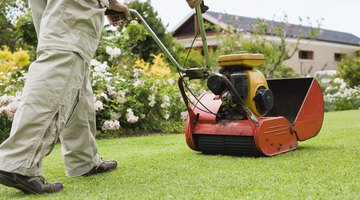



Voles
-
Test for vole activity by placing square shingles that blend into the mulch over vole holes. If testing for meadow voles, arch the shingles to allow the animal to get underneath.
-
Place a small piece of apple under each shingle after five days. Check after 24 hours. Apple pieces will be missing from active holes.
-
Place poison bait directly in the active runways and holes in the yard to help prevent birds, other animals or children from having contact. Apply zinc phosphide or anticoagulant bait, per the manufacturer's directions. Zinc phosphide can be effective in a single application (6 to 10 lbs. per acre). Anticoagulants are slow acting and require multiple applications to be effective.
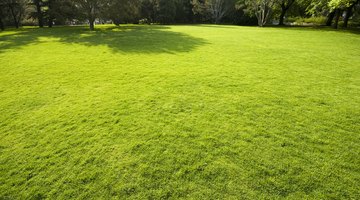

Groundhogs
-
Cut a section of sod slightly larger than the burrow opening with a spade. This will be used to plug the groundhog hole. Alternately, use a garbage can cover, sand bag or similar item.
-
Punch five small holes in the end of a gas cartridge. Insert the fuse in one of the holes, leaving half its length outside the cartridge.
-
Light the fuse and place the cartridge as deep in the burrow hole as you can. Do not throw the cartridge into the hole.
-
Plug the hole with your clump of sod, grass-side down, to prevent loose soil from extinguishing the fuse.
-
Watch for several minutes, plugging holes where you see gas escaping.
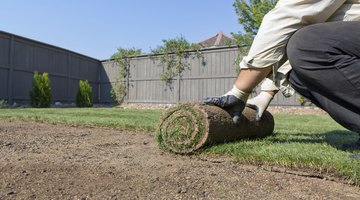
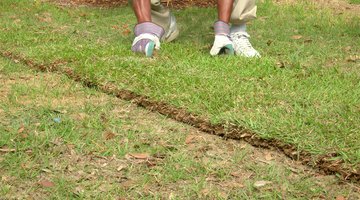
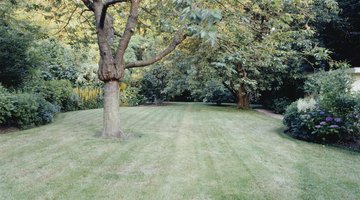
Tip
Moles are not harmful to people, pets or plants since they eat earthworms, grubs, beetles and other insects that live underground. Having a mole in your yard can be beneficial to your lawn, as the mole is eating pests. Moles are easiest to trap in the spring and fall, when they are closest to the surface. Keep safety in mind. Be sure poison or traps are not accessible to household pets or children. Gas cartridges containing carbon monoxide can be found at farm or garden supply businesses and are easy to use. Try not to breathe the gas emitted when placing the cartridge in the burrow.
Warning
It is illegal to kill moles in some states.
The Drip Cap
- Holes in your lawn can multiply if your yard has moles, voles or groundhogs.
- The surest way to prevent moles, voles or groundhogs from coming back is to kill them.
- Trapping them in their favorite tunnels is an effective way to eliminate a mole.
- Voles eat the roots of trees and shrubs, do not hibernate and reproduce at high rates.
- A vole problem often involves multiple rodents, making trapping time consuming and ineffective.
- Test for vole activity by placing square shingles that blend into the mulch over vole holes.
- Place poison bait directly in the active runways and holes in the yard to help prevent birds, other animals or children from having contact.
- Cut a section of sod slightly larger than the burrow opening with a spade.
- Light the fuse and place the cartridge as deep in the burrow hole as you can.
References
Writer Bio
Alice Drinkworth has been a writer and journalist since 1995. She has written for community newspapers, college magazines and Salon.com. Drinkworth earned a Bachelor of Arts in journalism from the University of Wisconsin and won a media award for her in-depth coverage of local politics. She is also a certified master gardener.
Photo Credits
- Jupiterimages/Photos.com/Getty Images
- Jupiterimages/Photos.com/Getty Images
- Jupiterimages/Polka Dot/Getty Images
- David De Lossy/Photodisc/Getty Images
- Jupiterimages/Creatas/Getty Images
- Jupiterimages/Pixland/Getty Images
- 06photo/iStock/Getty Images
- Digital Vision./Photodisc/Getty Images
- MariuszBlach/iStock/Getty Images
- Pattie Steib/iStock/Getty Images
- David De Lossy/Photodisc/Getty Images
More Articles



